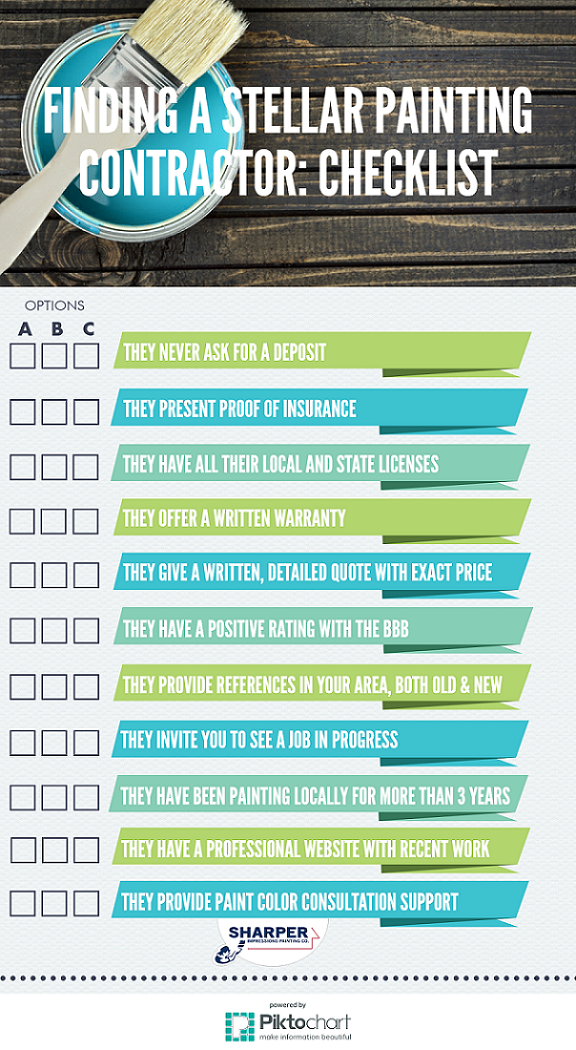Getting Your Walls Ready For A Smooth Paint Application
Getting Your Walls Ready For A Smooth Paint Application
Blog Article
Write-Up Composed By-Moses Damm
Attaining a flawless paint job starts with meticulous wall prep work. From filling in imperfections to priming surfaces, each step plays a crucial role in the final outcome. But what concerning those difficult edges and sides that can make or break the total look? Remain tuned to find skilled ideas on exactly how to browse these tough locations with finesse, guaranteeing a smooth finish that will certainly elevate your area to new elevations of class.
Wall Inspection and Repair
Checking wall surfaces for any kind of imperfections and promptly resolving them via essential fixings is important for attaining a smooth and remarkable paint job. Before beginning the painting procedure, thoroughly analyze the wall surfaces for cracks, openings, dents, or any other damage that could influence the result.
Beginning by completing any type of cracks or openings with spackling substance, enabling it to dry entirely prior to sanding it down to produce a smooth surface. For larger dents or harmed areas, consider using joint substance to guarantee a seamless repair.
Additionally, look for any type of loose paint or wallpaper that might need to be eliminated. Scrape off any peeling off paint or old wallpaper, and sand the surface to create a consistent structure.
It's likewise important to check for water damage, as this can bring about mold and mildew growth and influence the attachment of the brand-new paint. Resolve any kind of water spots or mildew with the suitable cleaning services before waging the paint process.
Cleansing and Surface Area Prep Work
To make sure a pristine and well-prepared surface for painting, the following action includes completely cleaning and prepping the wall surfaces. Begin by cleaning exterior painting edmonton with a microfiber fabric or a duster to get rid of any loosened dust, cobwebs, or particles.
For even more stubborn dust or crud, a solution of mild detergent and water can be made use of to gently scrub the wall surfaces, adhered to by a detailed rinse with tidy water. Pay unique attention to locations near light switches, door handles, and walls, as these have a tendency to gather even more dirt.
After cleaning, residential painting is important to check the wall surfaces for any cracks, openings, or imperfections. These ought to be filled with spackling substance and sanded smooth once completely dry. Sanding the wall surfaces gently with fine-grit sandpaper will likewise help develop an uniform surface for paint.
Priming and Taping
Prior to paint, the wall surfaces should be topped to ensure proper adhesion of the paint and taped to secure adjacent surfaces from roaming brushstrokes. Priming functions as an important action in the painting procedure, especially for brand-new drywall or surface areas that have actually been covered or fixed. It helps secure the wall surface, creating a smooth and consistent surface area for the paint to abide by. Additionally, related internet page can improve the toughness and insurance coverage of the paint, inevitably leading to an extra expert and resilient coating.
When it pertains to taping, utilizing painter's tape along trim, ceilings, and other surfaces you want to safeguard is vital to attain clean and crisp paint lines. Painter's tape is designed to be quickly applied and gotten rid of without damaging the underlying surface area or leaving behind any kind of deposit. Put in the time to properly tape off locations before painting to conserve on your own the trouble of touch-ups in the future.
Final thought
Finally, effectively preparing your walls before painting is essential for accomplishing a perfect surface. By checking for flaws, cleaning up extensively, topping the surface area, and utilizing painter's tape for tidy lines, you can make certain a professional-looking paint job.
Making the effort to finish these steps will certainly lead to a smooth and durable surface that improves the overall look of your area.
